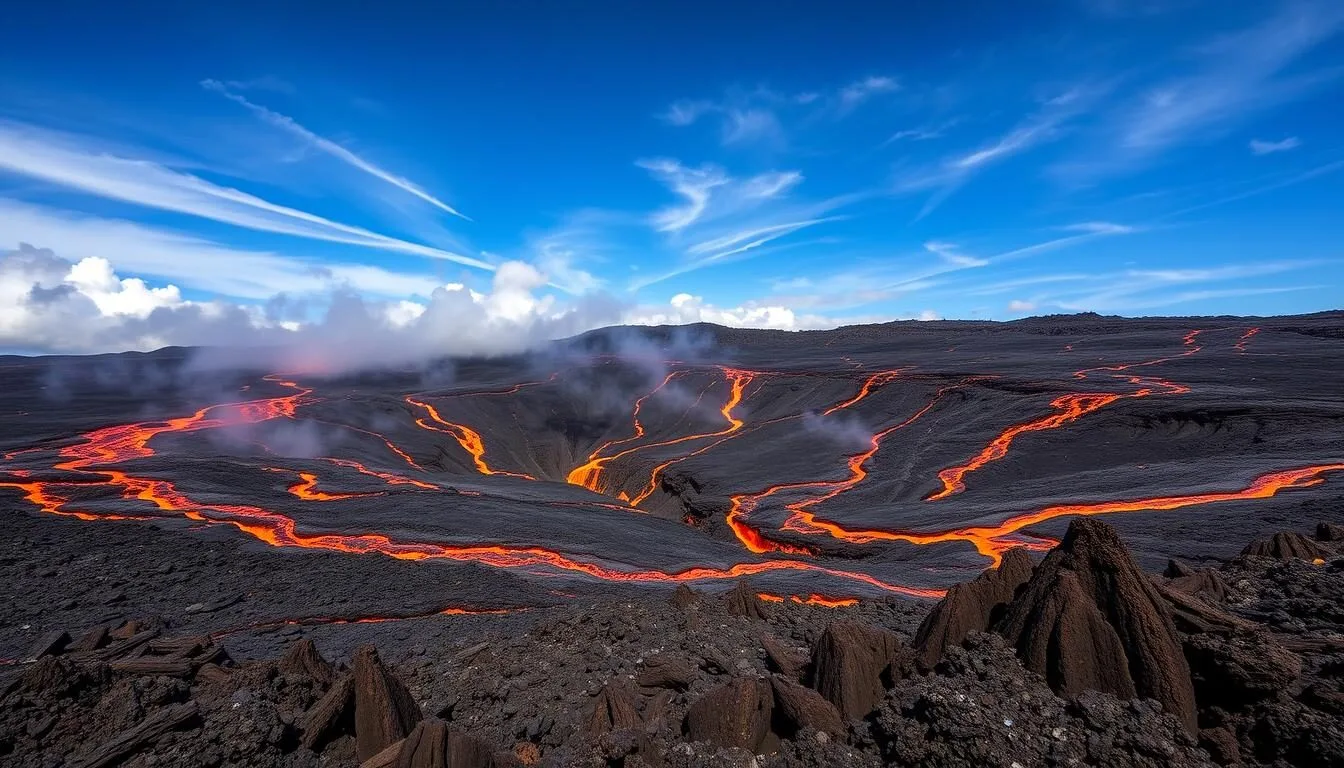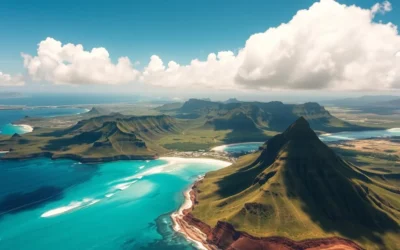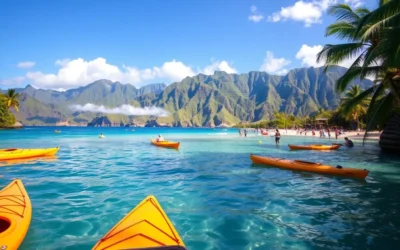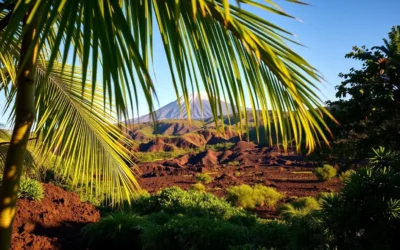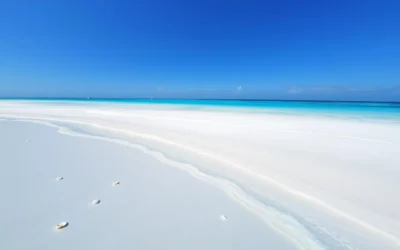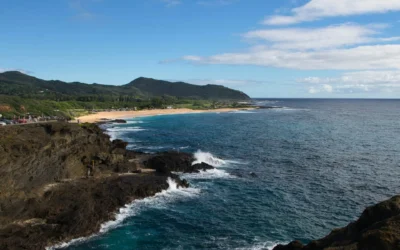✓ Accommodations✓ Flights✓ Rental Cars✓ Tours & Activities
Imagine standing on the edge of a volcanic crater, surrounded by a landscape shaped by the raw power of nature. You’re about to experience one of the most unique natural wonders in the United States.
Kīlauea, one of the world’s most active volcanoes, and Mauna Loa, the largest active volcano, await your visit. As you explore the park’s diverse terrain, you’ll witness lush rainforests, barren lava fields, and volcanic craters. With nearly 2 million visitors annually, this UNESCO World Heritage Site offers an unforgettable experience.
Your adventure begins here, with essential information about the park’s attractions, hiking trails, and current volcanic activity to ensure you make the most of your visit.
Exploring the Land of Fire and Rain
As you step into Hawai’i Volcanoes National Park, you’re immediately immersed in a world of contrasts, where fire and rain shape the ever-changing landscape. The park stretches from sea level to the summit of Mauna Loa, the world’s largest active volcano, and sprawls across 354,461 acres on the island’s southeastern side.
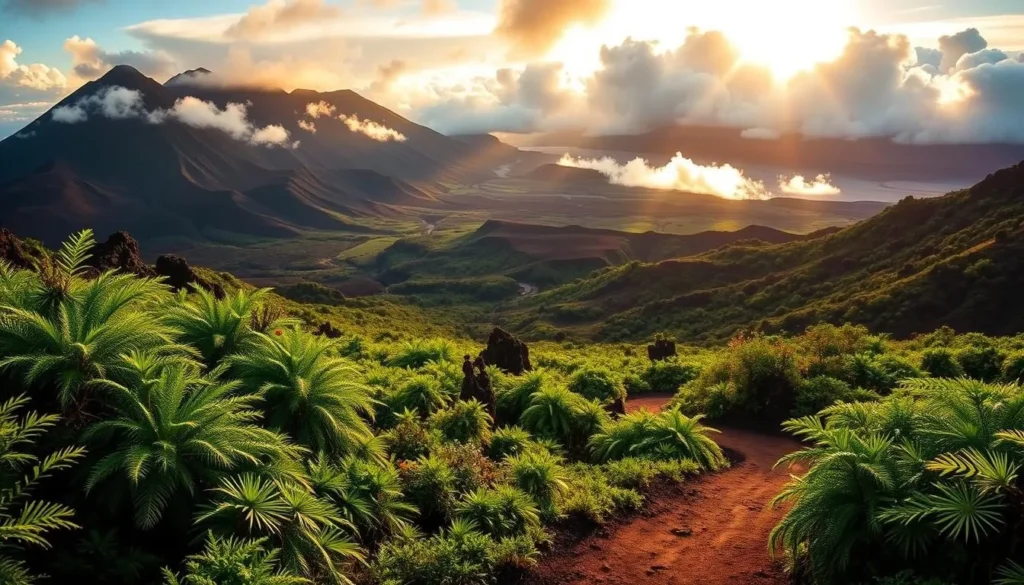
The Geological Wonders of Kīlauea and Mauna Loa
The park is home to two of the world’s most active volcanoes, Kīlauea and Mauna Loa. These geological wonders have created a dynamic landscape, with lava flows continually reshaping the area around them. Visitors can witness the raw power of volcanic activity up close, observing the impact on the surrounding environment.
The Park’s Diverse Ecosystems
The park encompasses seven distinct ecological zones, ranging from coastal environments to alpine regions. The lush rainforest within the park is home to native ʻōhiʻa trees and rare Hawaiian honeycreepers. As you explore the park, you’ll encounter diverse landscapes, from barren lava fields to thriving forests, demonstrating the resilience of life. The trails throughout the park offer a chance to witness the complex relationship between volcanic activity and biological diversity.
By exploring the various ecosystems within the park, visitors can gain a deeper understanding of the intricate balance between geological activity and the natural world. The diverse environments support a wide range of plant and animal communities, making Hawai’i Volcanoes National Park a unique and fascinating destination.
12 Must-See Attractions in Hawai’i Volcanoes National Park
From volcanic craters to ancient petroglyphs, Hawai’i Volcanoes National Park is a treasure trove of natural and cultural wonders waiting to be discovered. As you explore this unique national park, you’ll encounter a diverse range of attractions that showcase the area’s volcanic landscapes and rich cultural heritage.
Halemaʻumaʻu Crater and the Kīlauea Caldera
The Halemaʻumaʻu Crater, located within the Kīlauea Caldera, is a prominent volcanic feature that has been continuously erupting since 2008. As you stand at the overlook, you’ll be struck by the crater’s vast, steaming expanse, a testament to the park’s status as a land of fire and volcanic activity.
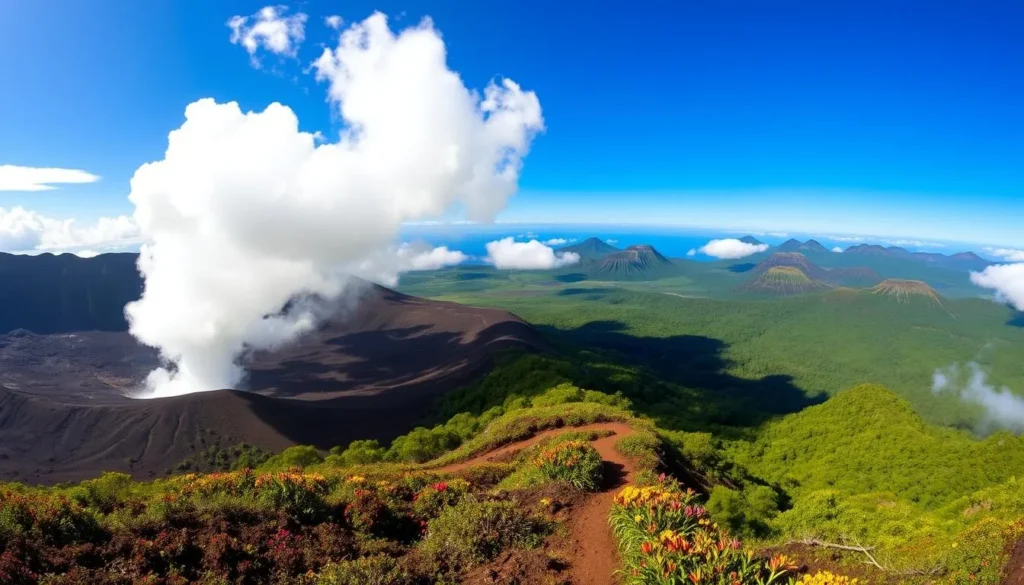
Thurston Lava Tube (Nāhuku)
Explore the Thurston Lava Tube, a well-preserved volcanic cave that offers a glimpse into the park’s volcanic history. As you walk through the lava tube, you’ll be surrounded by the eerie, dimly lit atmosphere and the unique geological formations that characterize this natural wonder.
Kīlauea Visitor Center
Your journey through Hawai’i Volcanoes National Park begins at the Kīlauea Visitor Center, where you can gather information, plan your itinerary, and gain insights into the park’s unique features and attractions. The center provides an excellent introduction to the park’s natural and cultural resources.
Volcano Art Center Gallery
The Volcano Art Center Gallery showcases the work of local artists, highlighting the cultural and natural heritage of Hawai’i Volcanoes National Park. You’ll discover a diverse range of art pieces, from traditional Hawaiian crafts to contemporary works inspired by the park’s landscapes.
Sulphur Banks (Ha’akulamanu)
Visit the Sulphur Banks, an area characterized by the distinctive yellow deposits of sulphur and the potent fumes emitted by the volcanic activity. This unique site offers a fascinating glimpse into the park’s geological processes.
Hōlei Sea Arch
Located along the park’s coastline, the Hōlei Sea Arch is a striking example of the area’s rugged shoreline and the erosive power of the ocean. This natural arch is a testament to the dynamic interplay between the land and the sea.
Puʻuloa Petroglyphs
Puʻuloa Petroglyphs is a sacred site containing over 23,000 ancient Hawaiian rock carvings, making it the largest collection in Hawaiʻi. As you walk along the boardwalk, you’ll see images of circles, canoe sails, human forms, and geometric shapes etched into the hardened lava surface.
| Attraction | Description | Location |
|---|---|---|
| Halemaʻumaʻu Crater | Volcanic crater with continuous eruption since 2008 | Kīlauea Caldera |
| Thurston Lava Tube | Well-preserved volcanic cave | Nāhuku |
| Puʻuloa Petroglyphs | Ancient Hawaiian rock carvings | Pānau Nui, southern flank of Kīlauea |
Hiking Trails and Scenic Drives
Explore the unique landscapes of Hawai’i Volcanoes National Park through its extensive network of hiking trails and scenic drives. With over 100 miles of trails, you can immerse yourself in the park’s diverse ecosystems, from lush rainforests to volcanic landscapes.
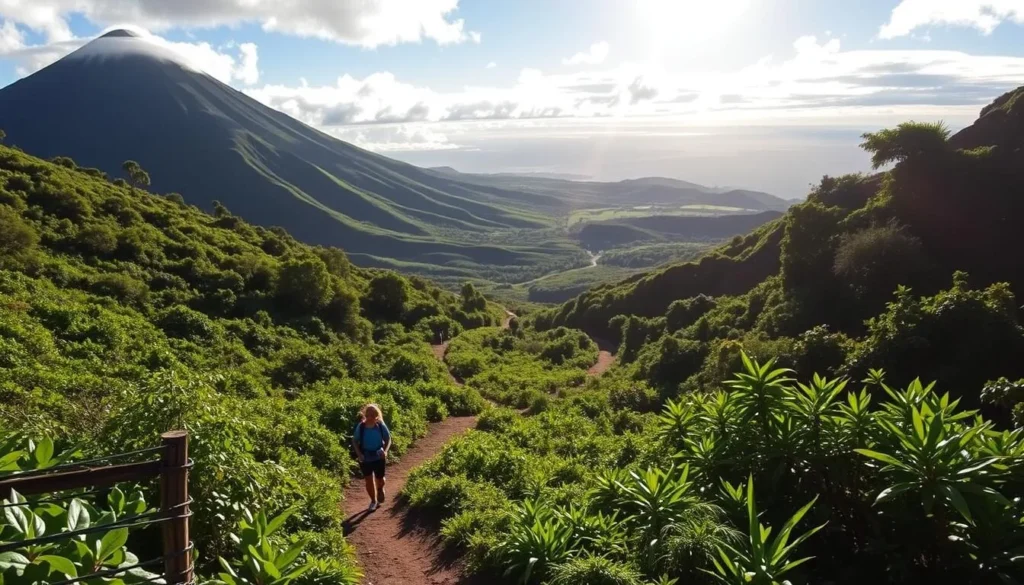
Kīlauea Iki Trail
The Kīlauea Iki Trail is a 4-mile loop that takes you through a lush rainforest and across a volcanic landscape. This moderate hike offers breathtaking views of the Kīlauea caldera and the surrounding landscape. As you walk, you’ll notice the unique geological features of the area, including volcanic rock formations and steaming vents.
Chain of Craters Road
Chain of Craters Road is a 19-mile scenic drive that descends through a series of volcanic craters, offering stunning views of the volcanic landscapes. You can stop at various points along the way to explore the craters and take in the views. Be sure to check the park’s website for up-to-date information on road conditions and closures.
Mauna Loa Road Scenic Drive
The Mauna Loa Road Scenic Drive is a 17-mile drive that takes you through a lush forest and offers stunning views of the surrounding landscape. This drive is a great way to experience the park’s diverse ecosystems and enjoy the scenic beauty of the area.
Devastation Trail
The Devastation Trail is a 1-mile loop that takes you through a landscape devastated by volcanic eruptions. This easy hike offers a unique perspective on the park’s volcanic activity and its impact on the environment.
Backcountry Hiking Options
For adventurous hikers, Hawai’i Volcanoes National Park offers over 100 miles of backcountry trails, ranging from moderate day hikes to challenging multi-day expeditions. Trails like the Mauna Loa Summit Trail and the Kaʻū Desert Trail offer unique experiences and breathtaking views. Be sure to check the park’s website for information on trail conditions, permits, and safety guidelines.
Hawai’i Volcanoes National Park, The Big Island, Hawaii: Visitor Information
To make the most of your visit to Hawai’i Volcanoes National Park, consider the following visitor information. Planning ahead will ensure a smooth and enjoyable trip.
Park Hours and Entrance Fees
The park is open 24 hours a day, 365 days a year. The entrance fee is $30 per vehicle for a 7-day pass. Individuals on foot or bicycle pay $15 per person for a 7-day pass. Annual passes are also available for frequent visitors.
| Pass Type | Fee | Validity |
|---|---|---|
| Private Vehicle | $30 | 7 days |
| Individual/Bicycle | $15 | 7 days |
| Annual Pass | Varies | 1 year |
Best Times to Visit
The best time to visit Hawai’i Volcanoes National Park is during the dry season, from May to October, when the weather is more favorable for hiking and outdoor activities. However, the park is a year-round destination, and each season offers unique experiences.
Getting to and Around the Park
The park is located on the Big Island of Hawaii. Visitors can fly into Kona International Airport or Hilo International Airport and then drive to the park. Once inside the park, there are scenic drives and walking trails to explore. Public transportation within the park is limited, so a personal vehicle is recommended.
![]()
Current Volcano Activity and Lava Viewing
Checking the park’s website for current volcano activity is advisable, as conditions can change. The Kīlauea Visitor Center is a great resource for up-to-date information on lava viewing areas and safety guidelines.
Special Programs for Families and Children
The park offers various programs for families and children, including the Junior Ranger program. Children up to 12 years old can become junior rangers by completing activities tailored to their age group, earning a badge in the process. Ranger-led programs and cultural demonstrations are also available, providing a hands-on experience for people of all ages.
- Download and print Junior Ranger booklets from the park’s website to prepare before your visit.
- Participate in ranger-led programs, including guided hikes and cultural activities.
- Enjoy the “After Dark in the Park” program for evening presentations on various topics.
By planning ahead and taking advantage of the park’s resources and programs, your visit to Hawai’i Volcanoes National Park will be both memorable and enriching.
Where to Stay Near Hawai’i Volcanoes National Park
For those looking to immerse themselves in the natural beauty of Hawai’i Volcanoes National Park, there are several accommodation options to consider, both within and around the park. The choices range from luxury lodges to camping sites, ensuring a comfortable stay for every visitor.
Volcano House and In-Park Accommodations
The Volcano House is a historic hotel located within the park, offering stunning views of the Kīlauea caldera. It’s a great place to stay if you want to be close to the park’s main attractions, just a short walk from the Kīlauea Visitor Center.
Camping Options
For those who prefer a more rustic experience, the park offers several camping options. These sites are available on a first-come, first-served basis, and it’s advisable to arrive early, especially during peak season.
Nearby Volcano Village
If you’re looking for alternative accommodations, Volcano Village is a charming alternative, just a few minutes drive from the park entrance. The village is nestled in a lush rainforest and offers a range of vacation rentals and bed and breakfasts. Be sure to pack light layers, as the village’s elevation results in cooler temperatures.
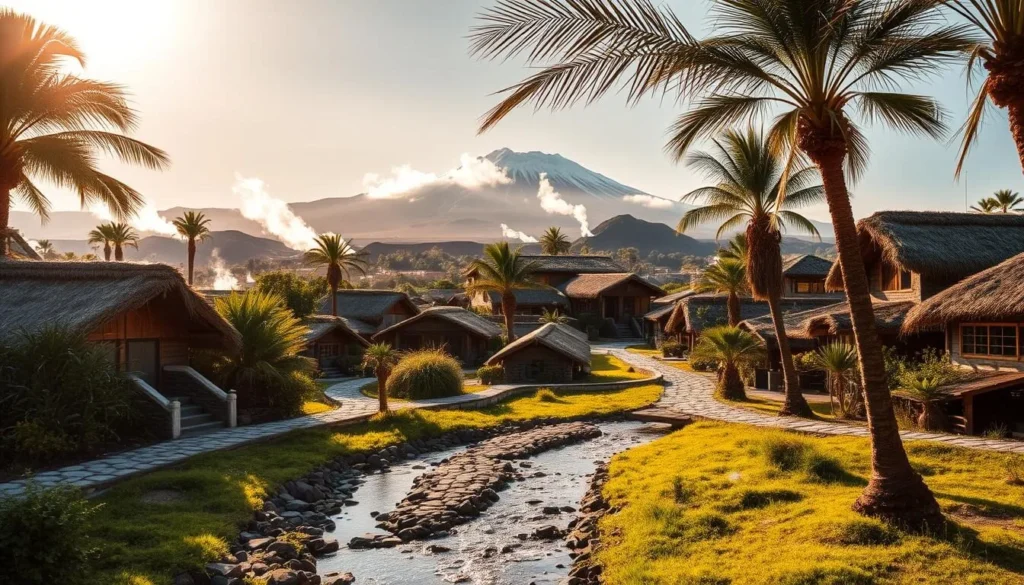
Respecting the Land and Culture
As you explore Hawai’i Volcanoes National Park, remember that you’re not just visiting a geological wonder, but also a place of deep cultural significance. To preserve the park’s integrity, stay on marked trails and respect closed areas. Refrain from stacking rocks or creating cairns, as this can confuse hikers and disrupt the landscape. Be mindful of cultural practices and keep a respectful distance if you encounter Native Hawaiians performing rituals.
- Respect the park’s cultural and ecological resources.
- Leave rocks and lava rocks behind to avoid bad luck and preserve the park.
The above is subject to change.
Check back often to TRAVEL.COM for the latest travel tips and deals.
